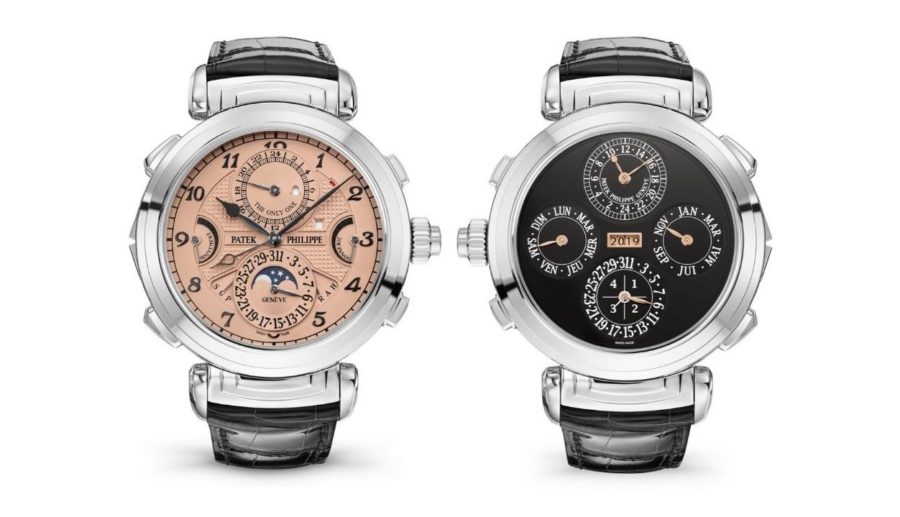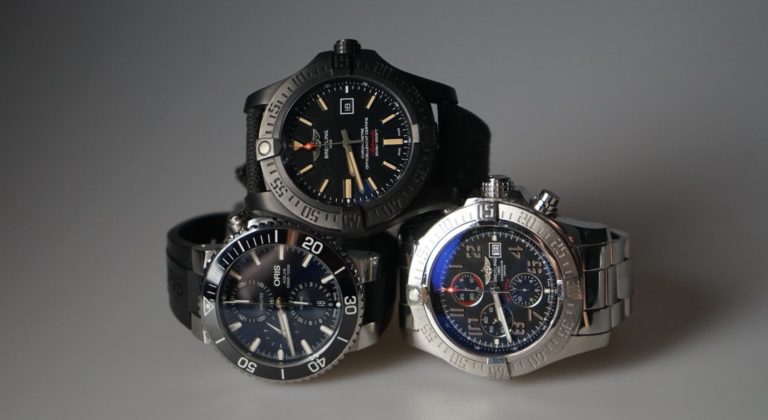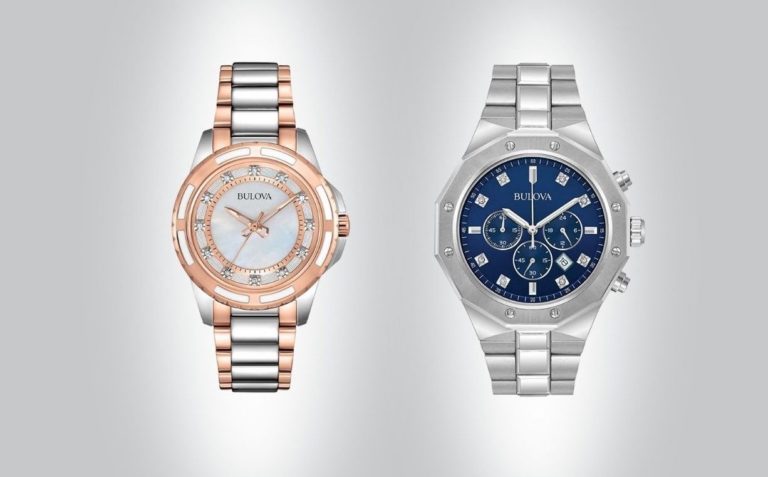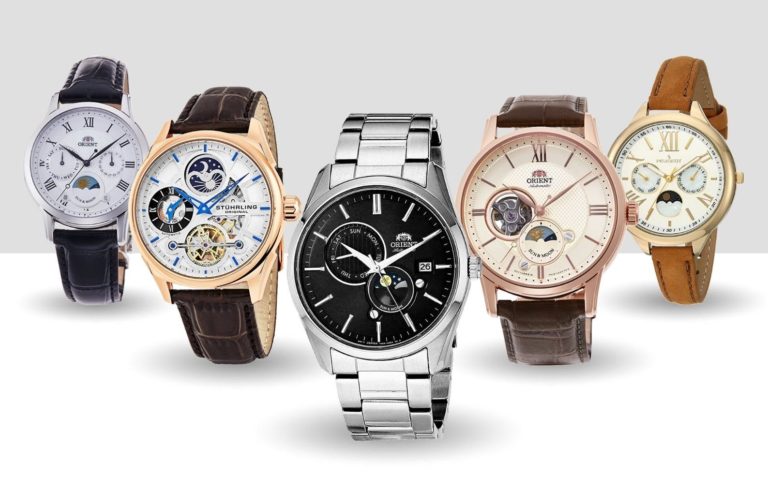Affiliate Disclosure: As an Amazon Associate I earn from qualifying purchases. Details
For most of us, a wristwatch is a simple commodity that helps keep track of time and complement one’s outfit. It is also a relatively small device that doesn’t often catch attention in the first place.
But what may be quite surprising for many is this small device has a rich history stretching back centuries. And if something has been around for so long, there is a lot of ground for interesting facts, statistics, and folklore.
Following, we have combined the most exciting watch facts and statistics you probably didn’t know about.
So, keep on reading to find out about the fascinating world of watches!
1. Apple Watch Is the Most Sold Watch in the World
If you’re thinking about watches and what could be the most sold wristwatch globally, you may think of Seiko. Maybe even a Fossil or a Tissot.
No.
The most sold watch in terms of units is Apple Watch. And it has been that for several years now.
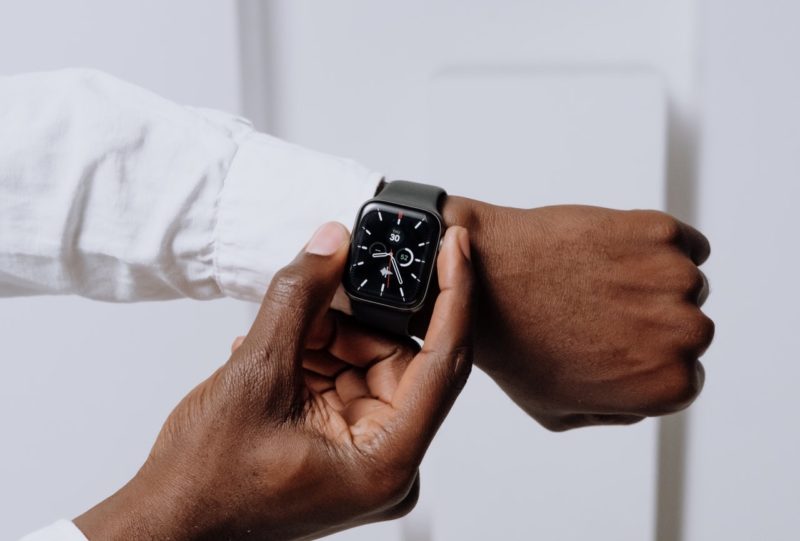
The gap between the Apple Watch and the rest of the brand watches is so huge that the king of smartwatches even surpasses the whole Swiss industry with 31 million units sold in 2019, whereas the Swiss shipped around 21 million watches.
Whether we have another groundbreaking revolution happening that drastically shapes the industry remains to be seen.
2. The Most Expensive Watch Sold For $31 Million
In 2019, the world saw a staggering amount paid for a wristwatch. The Patek Philippe Grandmaster Chime Ref. 6300A was sold at auction for no more than 31.19 million US dollars. It surpasses the previous record-holder, Paul Newman’s Rolex Daytona, almost two-fold.
For clarification purposes, $31.19 million equals 60 Lamborghini Aventadors; or 30 Manhattan apartments. You can also buy 3,000 Rolex Submariner Date watches for the money.
The record-breaking Patek Philippe is the only one ever produced. It consists of four spring barrels driving 20 complications, such as a grand and petite sonnerie, instantaneous perpetual calendar, minute repeater, chimed alarm, and day/date.
The watch is one-of-a-kind also for featuring two different dials – one in the front and the second at the back. The dials can be easily switched between with the help of reversible lugs.
Since the final bidder in the auction remained private, no one hasn’t the foggiest who bought it.
3. The Most Complicated Watch Consists of 2,826 Parts
When a simple quartz watch consists of a few dozen parts and a mechanical watch a little more than a hundred, then the most complicated watch ever made has 2,826 parts crammed into a few inches.
The honor belongs to the Constantin Vacheron Reference 57260.
This unbelievable pocket watch took eight years to assemble, consists of 57 complications, weighs a whopping 957 grams (33.7 ounces) and stretches 98mm in diameter.
Like the Patek Philippe Grandmaster, there’s only one such timepiece ever created. It was ordered by a major watch collector who reportedly paid more than $10 million for this masterpiece.
4. G-Shock DW-5600E-1 – The Strongest Watch
Although it is difficult to measure the strength of a watch, Casio G-Shock is oftentimes considered to be the brand that manufactures the strongest of them all.
In order to confirm the widespread opinion with a solid fact, Casio decided to test one of its watches, the G-Shock DW-5600E-1, by letting a heavy vehicle drive over it.
The result was that the watch didn’t sustain any significant damage and still functioned normally after a 24.97-ton truck drove over it with three tires.
In the end, G-Shock broke the Guinness World Record for “the heaviest vehicle to drive over a watch.”
5. The Largest Watch Measures an Insane 90mm
The Japanese brand MUSK came out with an experimental wristwatch in 2006. No, it didn’t have unique design elements, and neither did it have any sort of experimental material that had not been used before in a watch.
Instead, what MUSK did was that it introduced the largest watch in the world that measured an unbelievable 90mm in case diameter.
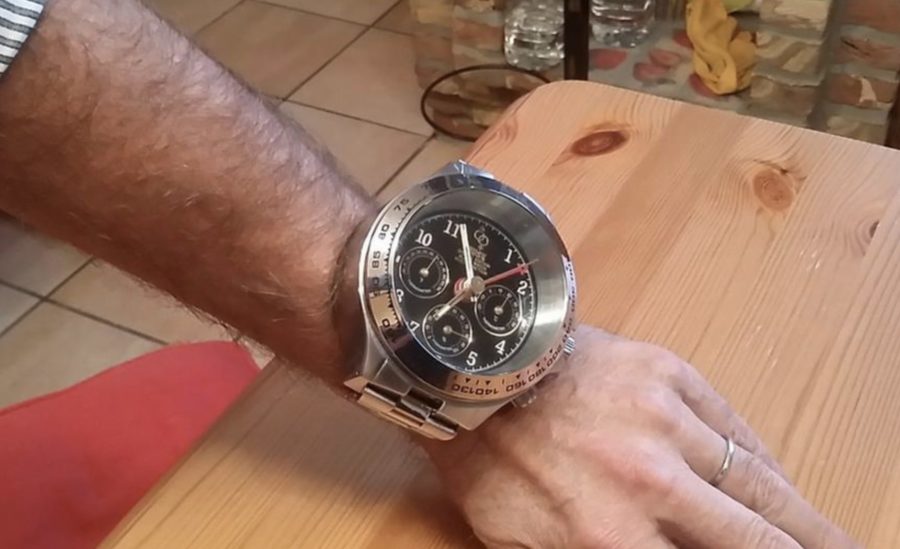
I must say it’s the worst-looking watch ever produced. And not only does it look ugly, but there’s absolutely no way that a man can actually wear it.
Be that as it may, the hype around the MUSK MR2129 didn’t last long, and, fortunately, it is not being produced anymore.
6. The Most Popular Watch Color is Black
Although blue is often regarded as the world’s favorite color, it is actually black that people wish to see in a watch. When digging deeper, the reasons in support of black are not that hard to find.
First and foremost, black matches basically everything in your wardrobe, be it for blending or contrasting purposes.
Also, black watches usually have light-toned or luminous hands and hour markers, providing high contrast and superb legibility in low-light conditions.
Therefore, when thinking of gifting a watch to your loved one, choose black! You simply can’t go wrong with it!
7. The Oldest Wristwatch Dates Back to 1571
Even though it is difficult to determine what the first wrist-worn watch exactly was (mainly because of insufficient information), many historians consider it to be the one that Robert Dudley, the Earl of Leicester, gifted as a new year present to Queen Elizabeth I in 1571.
The “armlet” was described as follows: “In the closing thearof a clocke, and in the forepart of the same a faire lozengie djamond without a foyle, hanging thereat a rounde juell fully garnished with dyamondes and a perle pendaunt.”
However, when it comes to the first portable watch, it was the Pomander watch dating back to 1505.
8. King Charles II Introduced a “Pocket Watch”
It was in 1675 when Charles II of England introduced the waistcoat. What made it significant in terms of watches was that now it was possible to place a watch conveniently into the pocket of a waistcoat.
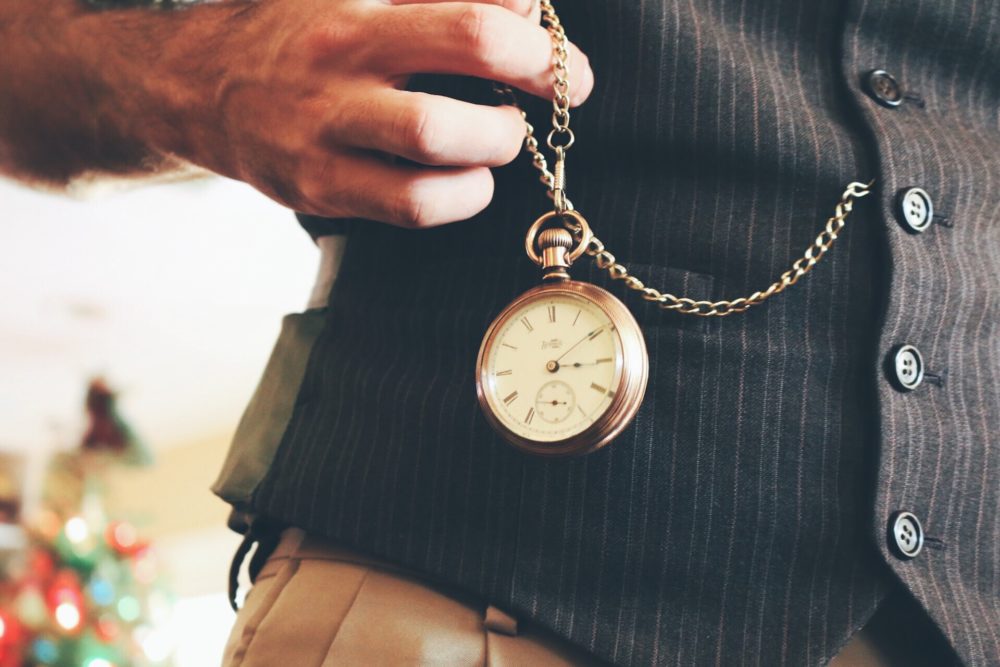
A “pocket watch” was much more practical than a then-popular pendant that simply hung around the neck – the pocket version provided better protection from hits and knocks.
The chain attached to the watch became widespread sometime later in the 19th century when Prince Albert introduced the “Albert chain.”
9. The Oldest Watch Brand Is Nearly 300 Years Old
The oldest watch brand Blancpain was founded by Jehan-Jacques Blancpain in 1735, making the brand nearly 300 years old.

Although Blancpain faced difficulties due to Quartz Crisis and eventually had to close its doors for several years, it re-opened in the 1980s and hasn’t looked back ever since.
The top three of the oldest watch brands consist of exclusively Swiss manufacturers. The second-oldest is Favre-Leuba (1737), while the honorable third place belongs to Vacheron Constantin (1755).
10. Men Didn’t Wear Watches Before the 20th Century
What may come as a surprise for many is that wristwatches were exclusively worn by women up until the 20th century. They were feminine and more bracelet-type rather than practical time-telling devices.
However, during World War I, men were in desperate need of convenient time trackers that could be checked without reaching into their pockets. That is when watches received the appearance as we know them today.
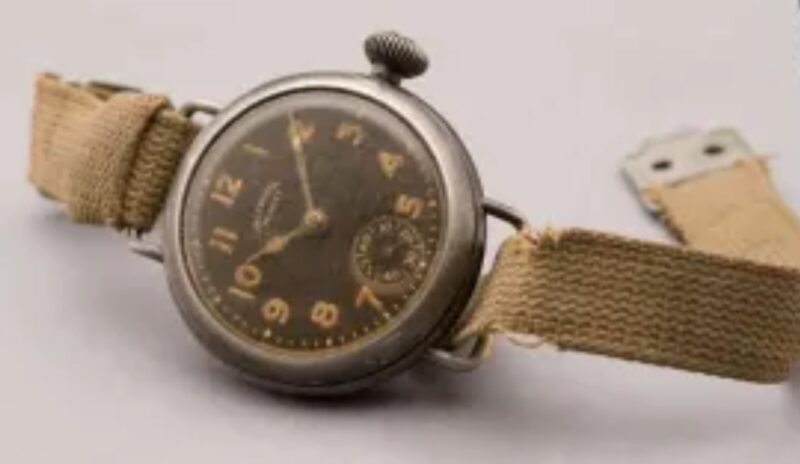
Inevitably, it became clear that wristwatches were highly practical devices that could also be used in daily lives. The rest is history.
11. The First Quartz Watch Was Introduced as Late as 1969
For many, the year 1969 is ages ago. However, in terms of horology, it is almost as yesterday. Therefore, it is pretty surprising that the most widespread type of watch these days – the quartz watch – was introduced as late as 1969.
The honor belongs to the Seiko Astron SQ35 that, at the time, cost as much as a medium-sized car.
The following decade saw the rapid development of the technology, which eventually resulted in much more accessible prices. These days, a quartz watch is the cheapest type of watch available.
12. Timex Is the Most Popular Watch in the USA
We all know Timex. It’s an affordable watch brand that produces good-quality timepieces.
However, compared to the heavyweights in the industry, such as Seiko, Bulova, and Citizen, the American manufacturer doesn’t seem as highly appreciated and coveted at first glance.
Yet the Americans think otherwise.
According to YouGov America, Timex is the most popular watch, with a 55% popularity rating. It outruns Seiko, rated at 45%, and Bulova with a 43% rating.
While the older generation and baby boomers find the acknowledged and historic brands favorable, including Timex, Seiko, Bulova, and Casio, the millennials appreciate fashion brands.
For example, the most popular watch brand among the youth is Tiffany with 48%, followed by Gucci (43%) and Dior (43%).
13. Citizen Is the Top-Performing Watch in the USA
When Timex enjoys the highest popularity among the Americans, it’s the Japanese manufacturer, Citizen, who performs the best out of all the watch brands out there.
In 2021, INSTORE Mag conducted a yearly survey asking 600 independent jewelers about their top-performing watches in terms of return on effort and investment. Citizen came at the top for the fourth straight year, exceeding Bulova, Seiko, and Rolex.
Considering the high reputation, vast selection, and top-notch technologies Citizen has, it’s not much of a surprise, to be honest.
14. China Is the Most Productive Watch Industry
Yes, China, and not Switzerland when it comes to the number of items exported.
In the last pre-Covid year in 2019, China shipped 644 million watches. It was more than all the other countries in the top 5 combined. Switzerland, for instance, exported only 20 million watches.
However, since the price of Chinese watches is low compared to that of Switzerland, which produces world-famous luxury watches, China’s estimated value of exports stayed well behind Switzerland.
When Switzerland pocketed $22 billion in 2019, China’s corresponding number stayed at $5 billion. Hence, Switzerland is still the biggest watch industry by large margins and remains to be for long years.
15. Watches Have Been to the Moon
Did you know that astronauts have worn wristwatches during lunar missions?
The most famous “moon watch” is the Omega Speedmaster which was selected as the official timepiece for the missions.
There is also the Bulova Moonwatch that, quite interestingly, became to be known as the “moon watch” several decades later when an astronaut Dave Scott revealed he took it with him as a backup watch for the Apollo 15 mission.
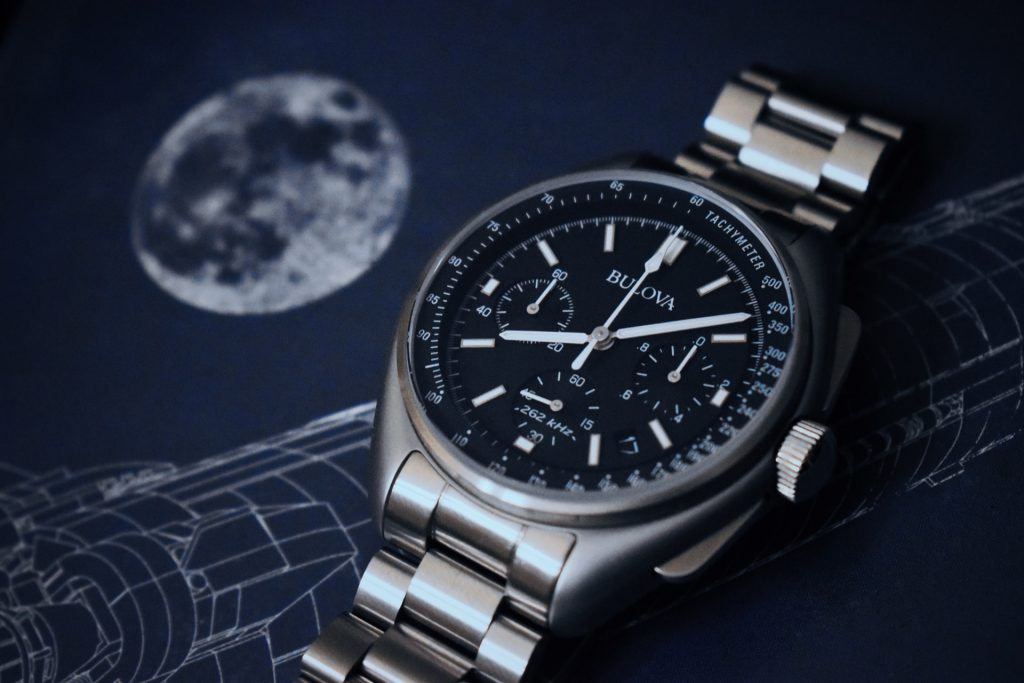
The third known timepiece worn on the Moon is the Rolex GMT Master. The watch was highly popular among watch crews and is therefore dubbed the unofficial “moon watch.”
16. Rolex Has Been to the Deepest Location on Earth
Actually, Rolex made it twice – in 1960 and 2012.
During the first mission to Mariana Trench, which is more than 35,000 ft deep (11,000 km), an experimental Rolex Deep Sea Special was attached to the outside of a bathyscaphe. And the watch survived.
The next submersion in 2012 was made by a famous filmmaker David Cameron. It was the first solo dive and the second crewed dive to the bottom of Mariana Trench.
This time, the journey was accompanied by three specially-made Rolex Deepsea Challenge watches that were engineered to withstand the pressure of 12 tons. And the result? They all kept accurate time and survived the journey.
17. Rolex Was Based in London Initially
The most famous watch brand of all time, Rolex, is the crown jewel of Swiss watchmaking. But did you know that this luxury company was founded in London, not Switzerland?
In 1905, Hans Wilsdorf and Alfred Davis established Wilsdorf & Davis Ltd. (the former name of Rolex) in London. The company imported Swiss movements, placed them in cases, and sold them to various jewelers in the UK.

It was only in 1919 when the company moved its business to La Chaux-de-Fonds, Switzerland. And it wasn’t because of the fame and prestige of Swiss watchmaking but because of poor tax policies in the UK after the war.
The rest is history.
18. Most Watches Are Set to 10:10 For Specific Reasons
Have you noticed that most advertised watches have their hands set to 10:10? This serves both a practical and psychological reason.
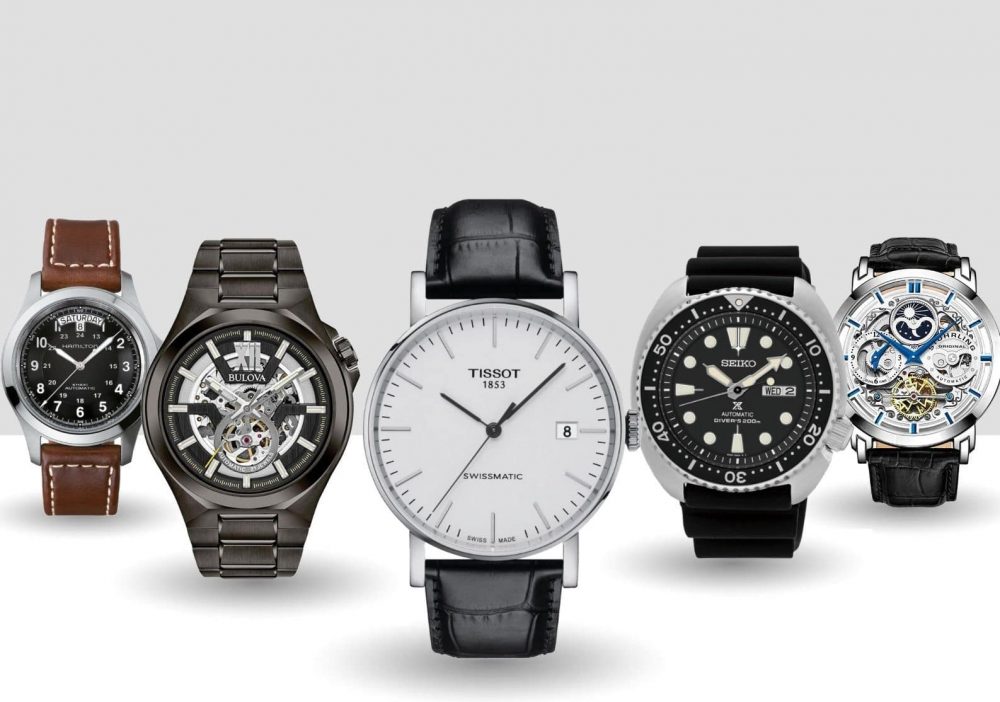
The practical reason is to keep the watch hands from obstructing the view of aesthetic features of a watch, such as the brand logo, subdials, and date window. These features are typically placed at 12, 3, 9, and 6 o’clock, and the 10:10 hands placement ensures their full glory.
The second underlying reason is psychological. Namely, the 10:10 setting looks like a smiling face, expressing positivity.
Another practical option would be to set the hands to 8:20 so that they wouldn’t obstruct the view. However, 8:20 is a sad face, which doesn’t express as much positivity as the 10:10 option.
19. Jeans Have a Place for a Pocket Watch
Most jeans have a small pocket above the standard pocket on the right side. Have you ever thought about why on Earth is it there? Because you can’t actually fit anything into it.
Initially, they were meant for pocket watches.
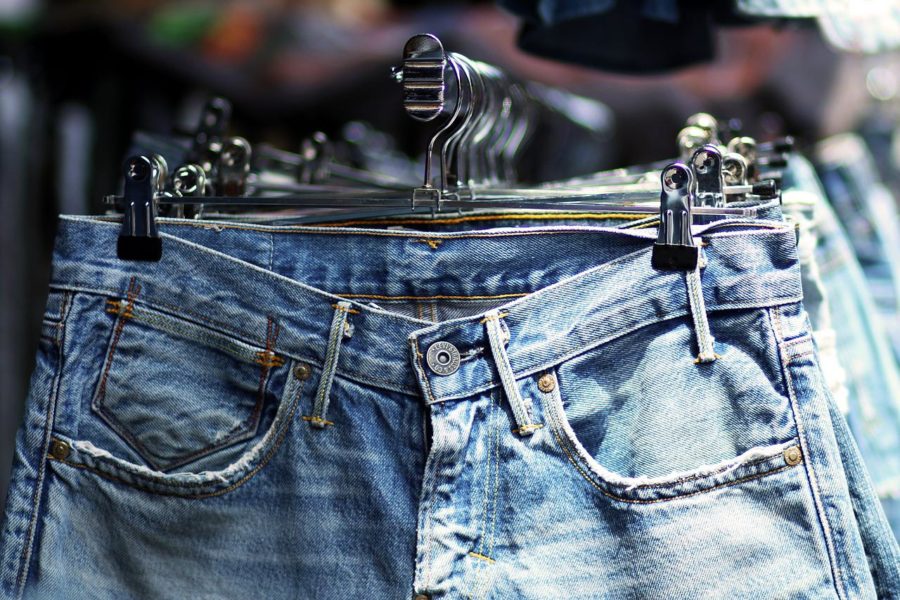
The design was made famous by Levi Strauss & Co. at the end of the 19th century. Today, Levi’s jeans, as well as other jeans brands, keep it there to maintain the integrity of the original and famous design. Also, the existence of that pocket gives pants a more casual look.
20. Watches Are Worn on the Left Hand for a Certain Purpose
If you buy a watch, you don’t think on which hand you will place it – it’s the left hand. Most people don’t even question the reasons for it. It’s just the norm, right? Like shaking hands with right hands.
But what exactly is the reason watches are worn on the left hand and not the right?
The reasoning is actually pretty straightforward – a watch is typically worn on the non-dominant hand (mostly left), so it wouldn’t get in the way when using the dominant hand (mostly right).
The watch design is another reason limiting the comfort of wearing a watch on the right hand. Namely, the crown and pushers lie on the right side of the case. So if you wear a watch on the right hand, you would have to reach over the case to operate them, which isn’t convenient.
Final Words
As you can see, the world of watches is full of interesting facts and statistics that are surprising to know. So, naturally, if you wear jeans, you know there’s a specific place for a pocket watch; or that the world’s most expensive watch can get you 60 Lamborghinis.
I hope this article about the different watch facts has offered you both fun and some valuable knowledge to take with you.
You may also like:
Affiliate Disclosure: As an Amazon Associate I earn from qualifying purchases. Details
- CIGA Design Blue Planet Gilding Watch: The Best Conversation Starter Around? - April 2, 2023
- CIGA Design X-Series Review: The Most Skeleton for the Money? - July 7, 2022
- What Is A Dive Watch? A Complete Guide - May 17, 2022

